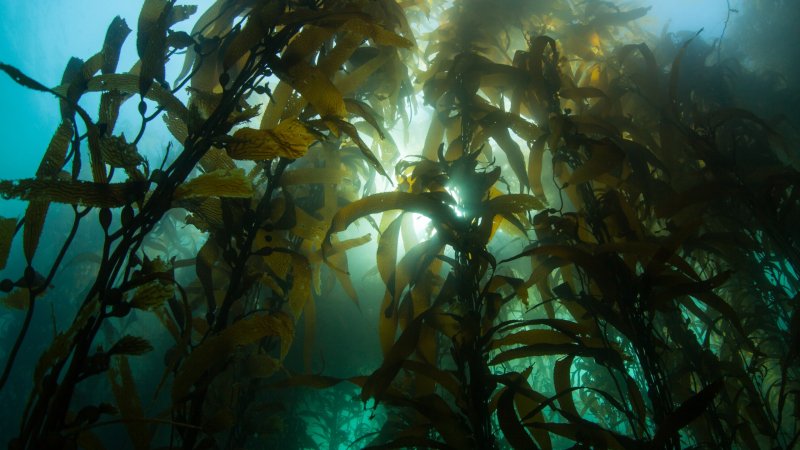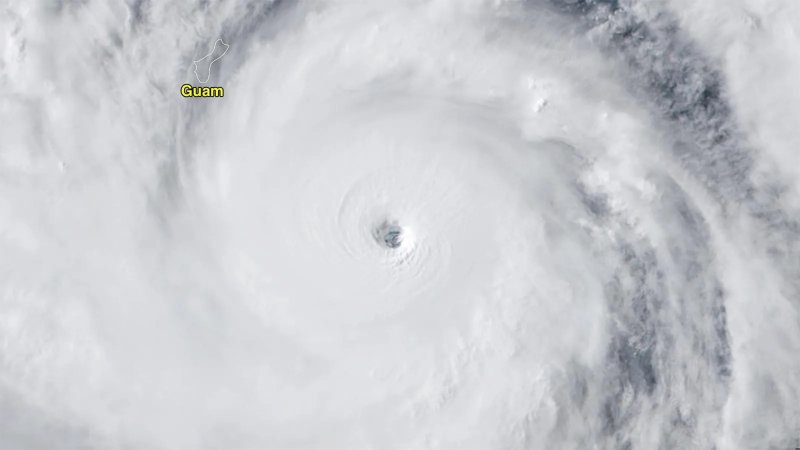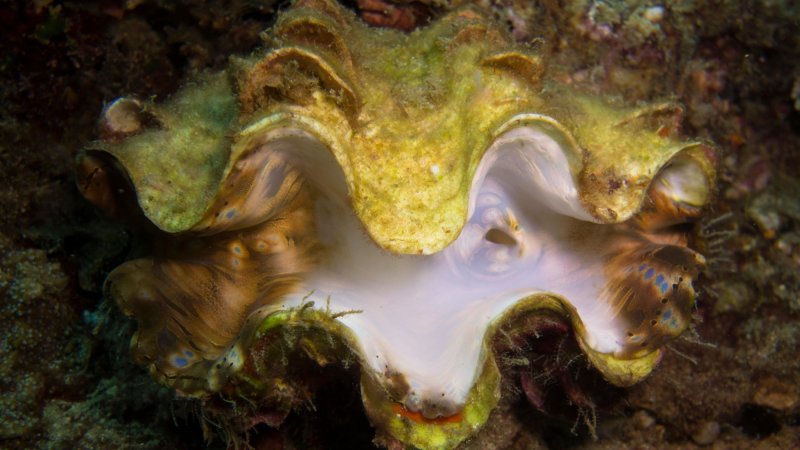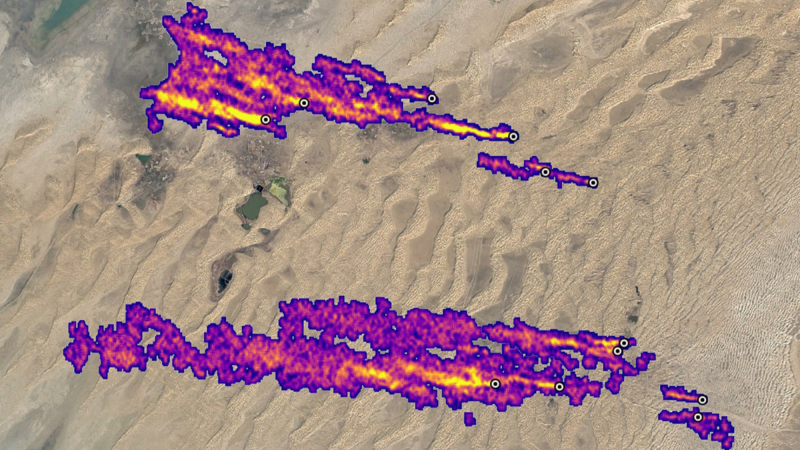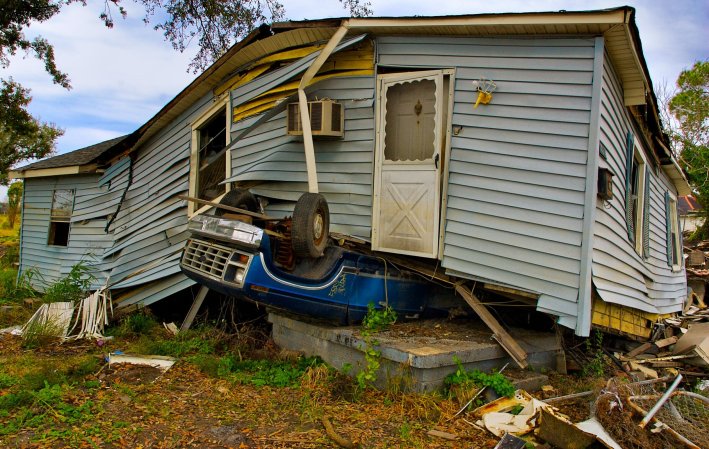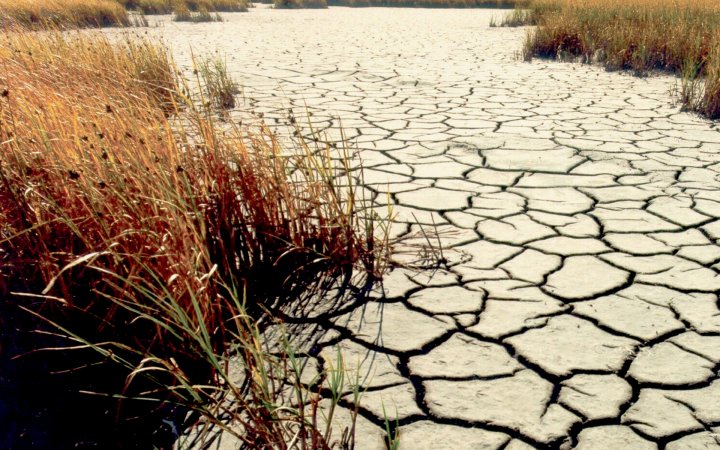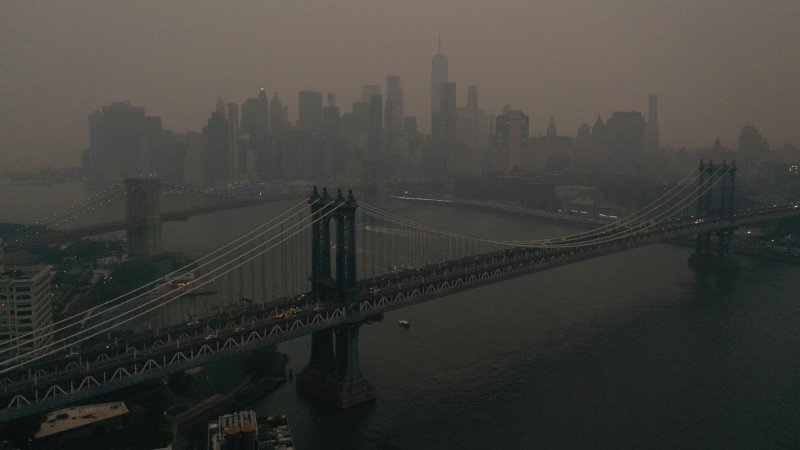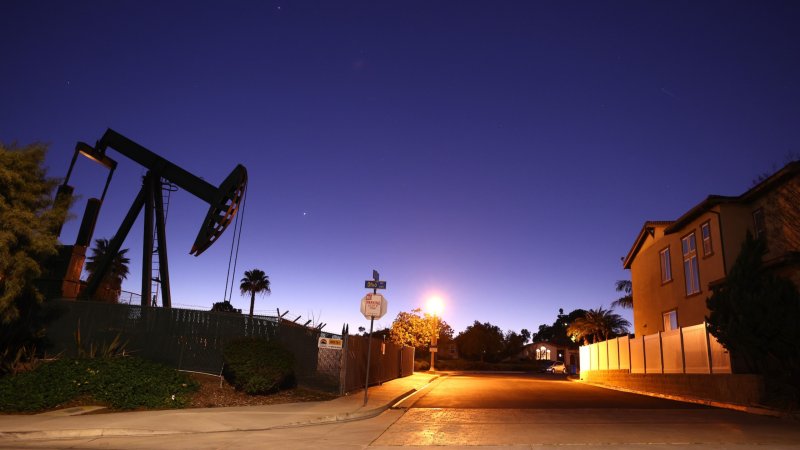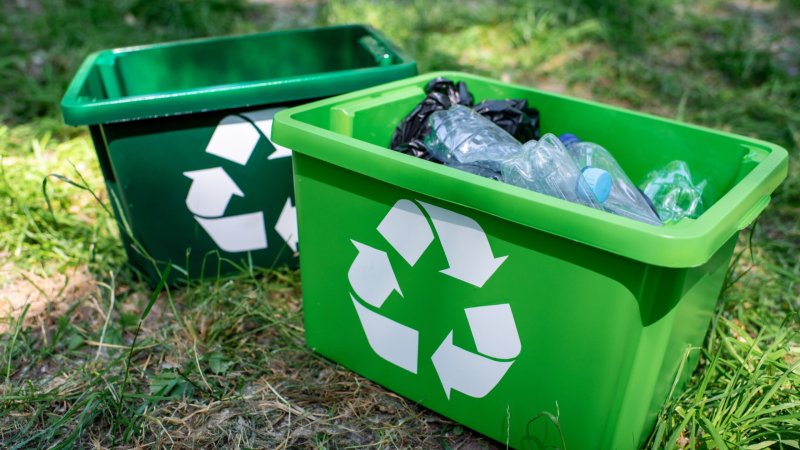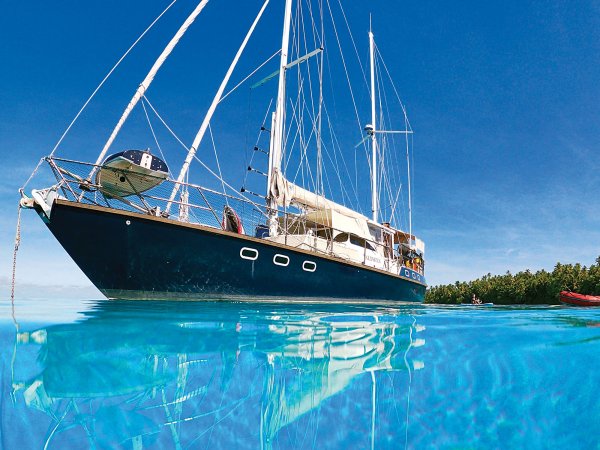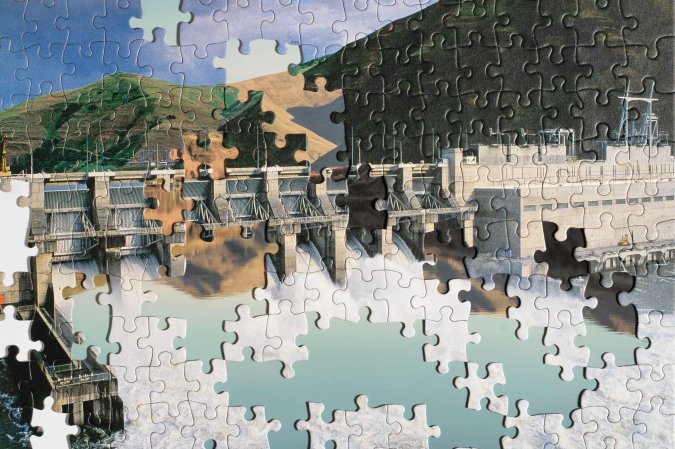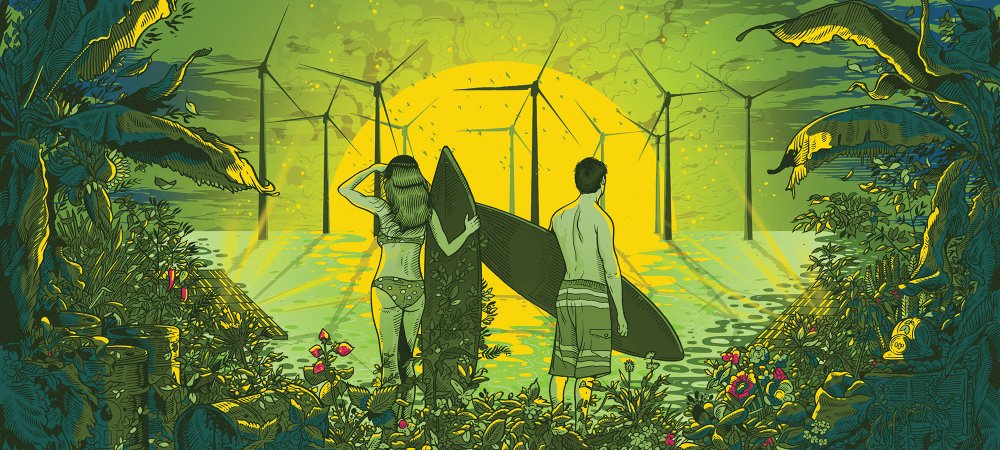

This article was originally featured on High Country News.
On a sweltering late April day, a flock of middle-aged men strolled in athleisure, practicing their backswings and rifling balls into the azure sky above the Green Springs golf community just outside St. George, a ballooning city of 100,000 in southwestern Utah. Some 2,000 homes, mostly single-family—many with RV garages—orbit the fairway, like rings around Planet Golf, and more are on their way.
As in so many cities in the desert West, golf in St. George is a thirsty business, with a powerful lobby and a relationship with water painted in green on the landscape. Among its peers, however, St. George is in a league of its own. Few cities in the Southwest use more water per person: nearly 300 gallons a day. And a hefty portion of that, over half, goes to keeping ornamental grass, lawns and golf courses lush in an arid region where water supplies are dwindling every day. Within a decade, and without immediate action to conserve, local officials predict that its water shortage will become a water crisis.
Utah is notorious for granting an unusual degree of grace to this sort of profligate water use. That may be changing, however, at least when it comes to the golf industry: In 2022, the city of Ivins, an exurb of St. George, effectively banned the construction of new golf courses, while early this year, state Rep. Douglas Welton, R, introduced House Bill 188, which could require golf courses to be more transparent about how much water they use.
In a city and at a time where something’s gotta give, will golf be the first to fall?
Minutes down the road from the Green Springs community, at the Dixie Red Hills Golf Course, I joined a group of older players staging behind the first tee. Before we settled on the griddle-hot pleather of our golf carts, Jim Peacock, 80, slapped a top-spinning rocket up and over the rough that his friend Craig Felt, two years his senior, couldn’t help but admire. “Jim’s the athlete of the group,” Felt said. Soon, the chatter moved to water. “When I was in Mexico, there was only enough water for three flushes. That could happen to us if we don’t pay attention,” Felt said. While Tom Smith, 75, indicated that he’d rather give up golf than toilet-flushing, it’s not clear that the rest of the community is so inclined. “This is a place where a lot of people do a lot of golfing,” Greg Milne said, gesturing toward the sprawl of St. George.
“That’s how it started. The course was built as a sort of vision for growth in the area.”
This area’s mingling of desert and water has long attracted people. Southern Paiute bands lived near the Virgin River for a millennium or more before Mormon colonists arrived in the late 1850s, intent on making “Utah’s Dixie” bloom with cotton. For the next century, Washington County remained “a sleepy little community off the I-15 that people would pass by on their way to California,” said Colby Cowan, director of golf operations for the city of St. George. Throughout the 1950s, nuclear blasts at Nevada’s Yucca Flats test range blew radioactive dust onto the homes of the city’s 5,000 residents—dust that stubbornly clung to the valley’s reputation.
But in 1965, St. George unveiled the nine-hole Dixie Red Hills course, rebranding the Mormon Downwinder outpost as a putter’s paradise. “That’s how it started. The course was built as a sort of vision for growth in the area,” said Cowan. Since then, golf’s role in the regional recreation economy has burgeoned. The 14 golf courses in Washington County, including four owned by the city of St. George, attract nearly 600,000 visitors a year, generating $130 million dollars annually, according to Cowan. That puts golf on par with mining, quarrying, and oil and gas industries in the area, though still below the half-billion dollars generated annually by Zion National Park.
And, like those other industries, golf has political sway. When golf’s water needs came under fire in Washington County in 2021 and again in the state Legislature this January, the industry flexed its influence. Golf Alliance Utah, the lobbying wing of the Utah Golf Association, pulled strings at the Statehouse in Salt Lake City, killing the bill even after sponsors dropped the annual reporting requirement, arguing that it unfairly targeted the sport.
Generally, the golf industry tries to burnish its image by touting its economic benefits and highlighting its efforts to decrease water use. “We’re doing our due diligence with water conservation,” Devin Dehlin, the executive director at the Utah Section Professional Golf Association, said in a call with High Country News. “What the sport brings economic-wise is the story we want to tell.” In practice, those changes have come down to encouraging course operators to replace some turf with native plants. Other technologies, like soil-moisture monitoring and artificial grass coloring, which gives turf a deep green appearance with minimal watering, are being adopted, though strictly on a voluntary basis. Dehlin said his organization does not track how widespread these changes are.
Of the ten thirstiest golf courses in Utah, seven are in Washington County, according to an investigation by the Salt Lake Tribune. Some privately owned courses, including Coral Canyon Golf Course and SunRiver Golf Club, actually increased their water use between 2018 and 2022. The mercury tops 100 degrees Fahrenheit here more than 50 days each year, so it takes an exorbitant amount of water to keep the fairways lush year-round: about 177 million gallons annually for each course, or roughly eight times the national average. And if the region continues to grow at its current breakneck rate, existing water supplies—from wells, springs and the Virgin River — will be severely strained. That prospect has some local and state officials backing a proposed pipeline that would carry Colorado River water from the ever-shrinking Lake Powell to this corner of the Utah desert. With or without the pipeline, the region is likely to face severe water rationing, with golf and lawns likely seeing the first cuts. Washington County’s forthcoming drought contingency plan could require cities to cut their water use by up to 30 percent in a worst-case scenario. “And if you look about where they would cut their water usage,” said Washington County Water Conservancy District Manager Zach Renstrom, “it really would come to large grassy areas, such as golf.”
In a bid to avoid future mandated cuts, St. George is scrambling to reduce its water use now. Under Renstrom’s guidance, the city passed sweeping conservation ordinances early this year—the toughest in Utah, but still mild compared to those in Las Vegas. Three of the four city-owned golf courses now use treated wastewater for irrigation rather than potable or “culinary” grade water. Las Vegas shifted to reused water for the majority of its courses by 2008. Cowan said the city-owned courses are beginning to remove ornamental grass from non-play areas. So far this year, the county has removed more than 264,000 square feet of grass. While that may sound like a lot, it’s only about six acres across the entire county, or roughly 4 percent of one local golf course. Even with those measures in place, Renstom says the halcyon days for golf in southwestern Utah need to end: “I’ve had a couple of developers come to me recently and want to talk about golf courses, and I flat-out said, ‘I won’t provide the water.’”
For now, though, the county still has some water to spare. St. George has secured $60 million for a wastewater treatment plant, all while stashing almost two years of reserves in a network of reservoirs. “We have a lot of water stored away,” said Ed Andrechak, water program manager for Conserve Southwest Utah, a sustainability advocacy nonprofit. If the county enforced the strict conservation rules that Las Vegas has, he believes it could grow at the blistering pace it’s projected to over the coming years.
But Andrechak worries that, ultimately, a culture of profligacy will be the barrier to conservation, not money or technical know-how: “We just don’t think water rules apply to us here,” he said. Andrechak cataloged a number of examples: a 1,200-foot lazy river under construction at the Black Desert golf resort in Ivins; the Desert Color community, which built around an artificial lake that Andrechak described as a “giant evapo-pond”; another three man-made lakes for the Southern Shores water-skiing-housing complex in Hurricane, and perhaps most bewildering, a Yogi Bear-themed water park east of St. George. The water park will require 5 million gallons or more of culinary-grade drinking water annually for rides like one nicknamed the “Royal Flush,” a toilet bowl-shaped slide. The Sand Hollow golf course next door gulps up 60 times as much water. “We’re 23 years into a mega drought, and yet my struggle here is that we’re not really that concerned about it,” Andrechak said. “That’s the culture.”
“We’re 23 years into a mega drought, and yet my struggle here is that we’re not really that concerned about it.”
This culture is enabled and even nurtured by policy: St. George’s water rates are among the lowest in the West, which results in bigger profits for course operators and more affordable green fees, but also disincentivizes conservation. “The whole idea has been to have low (water) rates to take care of the citizens by making golf affordable,” said Dehlin. “Having affordable water is important for the growth of the game and to keep our facilities in the conditions that we do. And that’s one thing about golf courses in Utah in general: they’re very well-manicured, very well-kept,” Dehlin said. “And yes, well-irrigated.”
Samuel Shaw is an editorial intern for High Country News based in the Colorado Front Range. Email him at samuel.shaw@hcn.org or submit a letter to the editor. See our letters to the editor policy. Follow Samuel on Instagram @youngandforgettable.

